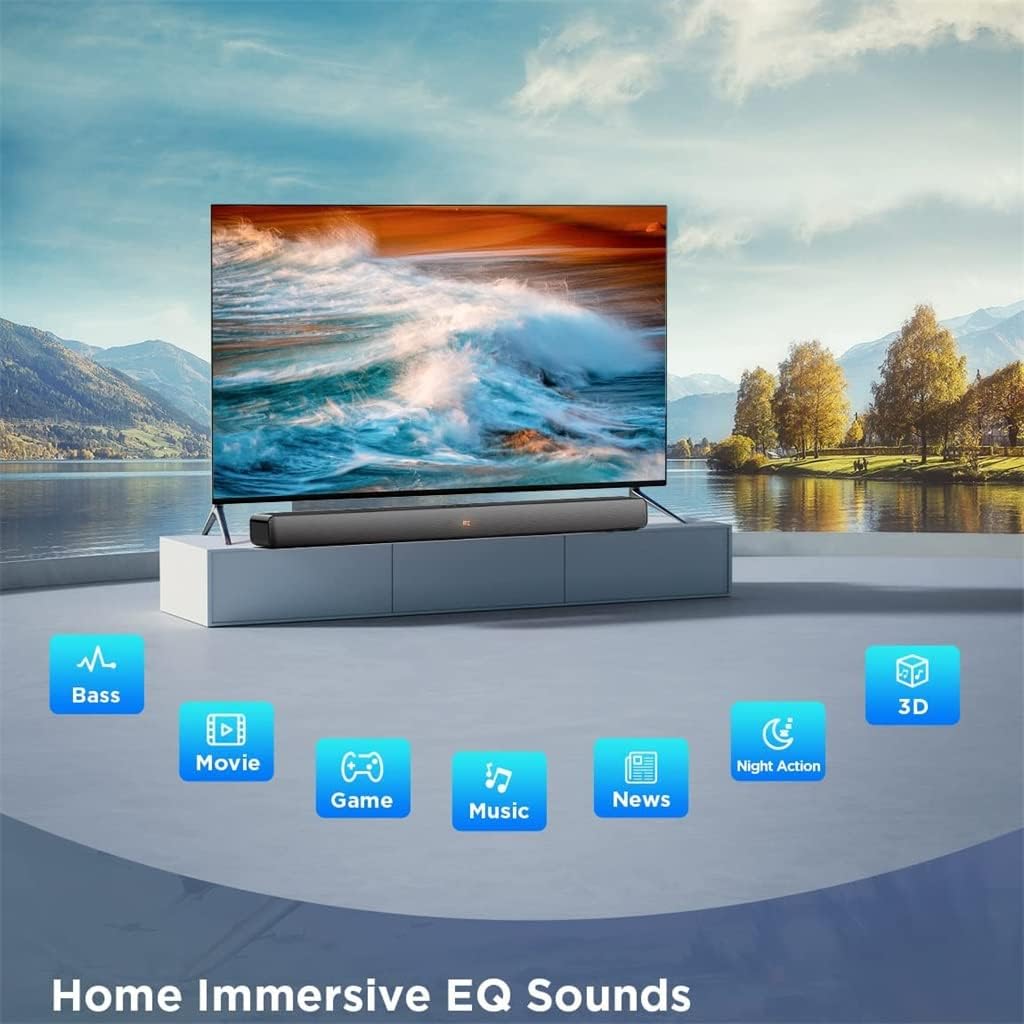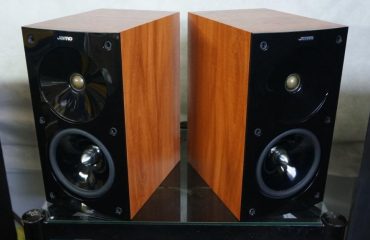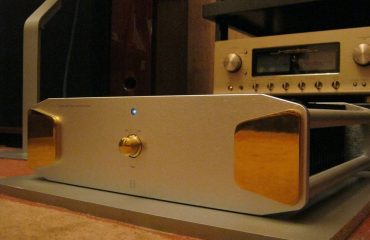VIDEO MISTAKES
It’s easy to make errors when you’re building a home theater system. Indeed, some magazines actually invite you to make them.
Can you get the movie theater experience in the comfort of your own home, without the spilled popcorn, the gum under the seat, and the whispered predictions of what will happen next? Not quite, though very expensive installations — using such exotica as line quadruplers and high-end projectors — can bring you closer than you’d think. Mostly, turning a TV set into a home theater means improving the sound. Not only can you do as well as your local cinema does, you should actually do better.
Yet not everyone does. It’s easy to make major errors in setting up an audio/video system, and a number of surveys have shown that, except for a handful of knowledgeable installers, video salespeople tend to know even less than their customers.
Know what you’re doing. Plan your system, just as you would with a conventional high fidelity system. And avoid the common pitfalls.
(a) Don’t convert back to mid-fi. Most people who read this magazine already know that receivers are best avoided, because they are designed to offer features rather than musical pleasure. Receivers that are labelled “A/V” are no different. You don’t have to use one, and if you care about how your system sounds, you shouldn’t.
The alternatives? A good hi-fi entry-level integrated amplifier at the very least. Its extra clarity, compared to an A/V receiver, will be welcome even with movie sound. Better yet is a high-end amplifier and preamplifier pair.
(b) Don’t assume a home theater system is incompatible with hi-fi. It should be obvious that a system that can reproduce Pink Floyd or a Mahler symphony should also do fine on Jurassic Park or Amadeus, but a number of manufacturers and even magazines try to convince you of the opposite. In many cases, it’s because they would like to wean you away from hi-fi and onto what they sell.
There is no more than a grain of truth in the claim. The grain is this: the compromises you might choose for an economy video system might not be the same ones you would choose for an economy music system. For instance, limited bass headroom is acceptable for most music types, but not for action movies. That’s as far as it goes. A system that can’t reproduce an orchestra won’t reproduce explosions properly either.
And a system that can’t reproduce spatial cues on your records isn’t going to do well at the same task in Dolby Surround.
(c) Don’t convert to mono. Conventional home theater packages invariably include a center channel speaker, but no one mentions that using it will mean your system will be running in pre-1958 mono most of the time. You’ll be told that using the center speaker will “make sure all the dialogue comes from one location.” Yup…that’s what mono is all about.
(d) Don’t buy a Pro Logic decoder that doesn’t have a switch for a “phantom center channel.” If you do, you won’t have a choice about that center speaker.
(e) Consider whether you really need a subwoofer. This is another feature of home theater systems that is assumed to be indispensable, but some systems don’t need one. A very good (and very large) subwoofer can extend the system’s low-frequency reach by an octave or two, but most video subwoofers extend only bass headroom. They allow playing very low frequencies louder than the main speakers could do without excessive distortion. Some loudspeakers, however, do this job so effectively that they don’t need help from a subwoofer.
Be aware of this when you’re looking at different speaker models. Some speakers are available in larger sizes with what amounts to a built-in subwoofer. That can potentially save both space and money.
(f) On the other hand, don’t try to upstage your subwoofer. If you’ve decided to add a subwoofer to your system, that takes some of the pressure off your main speakers. Take advantage of it. Certain small (though not necessarily inexpensive) speakers have a special talent for projecting an accurate stereo image. That’s a definite plus, and if the subwoofer is in charge of the basement, smaller main speakers are just fine.
(g) Don’t assume that a home theater kit will work well just because the parts have the same brand name. You already know that isn’t true in hi-fi. Though a few high-end manufacturers now make everything, one-brand systems are known in the trade as rack systems, because their look-alike boxes stack nicely in the matching imitation wood rack. Rack systems are poor investments if you’re looking for anything beyond background music. You won’t be surprised to learn that the rack system mentality has spread to home theater (“But look how many pieces you’re getting for only $1299.95.”).
(h) Don’t assume that a mediocre component is “good enough for movie sound.” True, a lot of movie directors aren’t looking for naturalness in sound, but there’s more to video than Arnold Schwarzenegger. And in fact you may want to be more picky about choosing your video sound components. Sometimes you might listen to music while doing something else, but no one watches movies that way.
(i) Don’t ignore the fine details. If you were setting up speakers for a music-only system, you’d buy proper stands (if the speakers weren’t floor-standing), you’d use properly adjusted spikes underneath, and you would use cable that didn’t come from a hardware store. A home theater system needs exactly the same attention to detail.
In particular, pay attention to speaker placement. With perfectly placed speakers, mono sounds should seem to emerge from a phantom point between the speakers, ideally from the screen. That illusion should hold even if you are seated dead center. If you don’t pay attention to this, you’ll have to use that center speaker.
(j) Don’t ignore the source. We’re always talking about this, of course, and for a reason. If the source is distorted, other components won’t take away the distortion, and if the source signal is lacking in information, the rest of the system can’t put it back. Is it different for home theater? Of course it isn’t.
Your video source may be a satellite linkup, a LaserVision player, or (starting in a few months) a DVD player. For most people, however, the main movie source is still a VHS cassette deck. Be sure you get a hi-fi model (the word “Hi-Fi” should be on the front panel). Decks using only the legend “stereo” or “Dolby stereo” are conventional decks, able to read only the linear tracks on a cassette. The quality is that of a portable cassette recorder.
Even so, don’t assume all “Hi-Fi” decks sound alike. As we noted in our test of several decks in UHF No. 35, there are wide divergences in sonic quality. And unfortunately most current decks lack controls for recording volume. Instead, an automatic level control chip constantly adjusts levels, destroying all the dynamics of the sound. Such a deck is acceptable only if you will be using it exclusively for playback, or perhaps for an occasional non-critical recording.
(k) Don’t use trash for the rear “channels.” We put “channels” in quotation marks, because the Dolby Pro Logic system, which derives five signals from only two, has no real rear channels. That being the case, it is tempting to use very low cost speakers at the rear. You may want to think twice.
True, most of the time those speakers won’t be contributing much to the sound you hear. Poor ones, however, will contribute too much. Distorted lows and shrill highs will call attention to themselves and dilute the quality you paid for in the rest of the system. Better to leave out the rear speakers than have poor ones.
There’s a second reason too, the fact you may not always stick with Dolby Pro Logic. Certain videodiscs now come with 5.1 channel soundtracks recorded in Dolby AC-3 (now known officially as “Dolby Digital”), and the new DVD players will come with that system. Discrete surround sound will give the rear speakers (and the accompanying amplifier) much more of a workout.
(l) Don’t be too impressed with “shielded” video speakers. What are they shielded against? A video image is formed by an electron beam that is swung back and forth by a magnetic field. The large magnet in a loudspeaker can also influence the beam, and cause image distortions and color shifts. Video speakers are therefore shielded in order to keep the magnetic field within the speaker cabinet itself. This is essential in a center speaker, which may well be placed directly on or under the monitor. The main speakers will in most cases be some distance from the monitor, however, and if that is the case they won’t need shielding.
Yes, that may mean your non-video speakers can be used as the front video speakers.
(m) Plan ahead. An uninformed sales clerk in a non-specialized store may not have much idea of technologies coming up next, and he may in any case be all too happy to sell you something that will be obsolete next week. Remember that at some point, if not next week, you may want to convert your system to 5.1 channel sound. But because conventional Dolby Surround will be around for years, you’ll need to run that as well. How will you set up your system to run both?
Be prepared to make extensive sketches on scrap paper. It’s cheaper than trying to muddle through once you’ve bought the wrong system.






